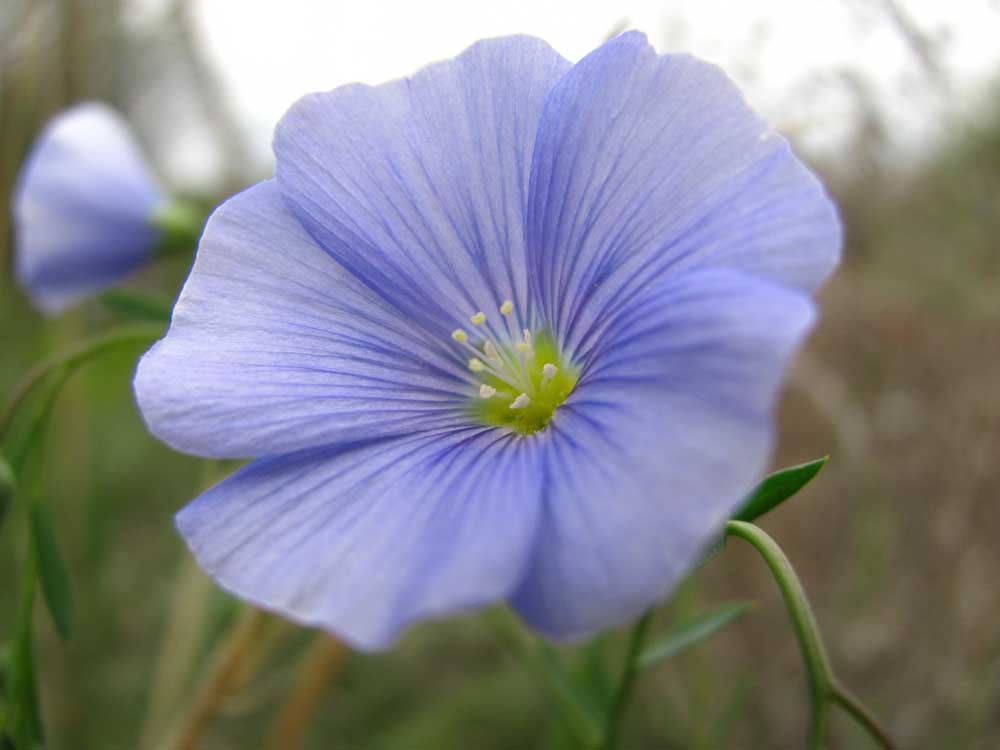Plan your garden with pollinators in mind
Published 12:00 am Tuesday, February 12, 2019

- The flower of the blue flax, linum lewisii.(123RF)
Did you really think it was too early to plan your garden? Never.
Based on past gardening experiences it’s clear which veggies will and will not be eaten. With vegetable choices taken care of, gardeners can concentrate on the beneficial plants that will not only bring eye-candy satisfaction but also encourage the pollinators to stop and stay awhile.
Planting a pollinator garden continues to command attention in garden magazines and seed company postings. Many seed packets are marketed as wildflower mixes to attract pollinators. But how many of those seeds will germinate in our climate?
Like any other endeavor, to be successful you need knowledge and the willingness to make conscious choices. You may covet the newest variety of your favorite flower with a triple layer of ruffled petals, but a pollinator would pass it by preferring the original variety with its single layer of petals. Pollinators must wonder the value of some technology.
Pollinator lists include birds, bees, bats, beetles, butterflies, flies and moths. Drawing them in can be a challenge. Pollinators can be as picky as your old Aunt Polly.
Bats like strong, musty odors emitted at night. The priority of some birds is to find funnel-like flower shapes with a strong perch support. Butterflies prefer bright colors, including reds and purples.
Pollinators need a reliable source of water that is shallow and has a sloping side. I use a 10-inch wide plant saucer with a few rocks to create a perch. Butterflies prefer a ground-level mud puddle.
The Xerces Society recommends that flowers clustered in clumps of at least 4 feet in diameter are more attractive to pollinators than scattered individual flowers.
Pollinators need protection from the weather as well as from predators. Protection is also needed for nesting and roosting. In simple terms, it is OK to leave a few dead snags for protection or even fallen fruit as a food source on the ground.
Now, let’s get down to the fine print. The best plan would be to learn and incorporate native plants into the landscape, which would encourage the native bees and other native pollinators. Sounds logical, right?
“Selecting native plants for home landscapes in Central Oregon,” written by Amy Jo Detweiler, Deschutes County Oregon State University Extension horticulturist, is a valuable reference that includes listings of both the common name and botanical name for deciduous trees, conifers, deciduous and evergreen shrubs, grasses and perennials. When researching the plants in the marketplace, include the botanical name in addition to the common name, blue flax would be linum lewisii.
This year, I would like to add a wax currant shrub ribes cereum to the hillside I see from my dining area. The shrub blooms in white to deep pink blossoms with the added fall interest of bright red berries that attracts birds. Also on my list this year is to plant more native yarrow achillea milefolium. It may not be the most dramatic plant in the landscape, but it attracts one of the most beneficial insects, lacewings.
Garden Ecology Lab, blogs.oregonstate.edu/gardenecologylab, contains postings under the direction of Gail Langellotto, Oregon State Master Gardener Statewide Coordinator, reporting on ecology lab studies being done by graduate students. At this time of year the postings aren’t as regular as they are at the height of the gardening season. The group has posted Plant of the Week selections, a report on how tender, love and care to gardens may not be benefiting them as much as we think and detailed reports on the native bee studies. Although it is gardening on the west side of the Cascades, it is worthy of you signing up their e-mail list.
Make this the year to toss out the potent sprays. Instead try encouraging the pollinators and beneficial insects Mother Nature provided.
— Reporter: douville@bendbroadband.com






